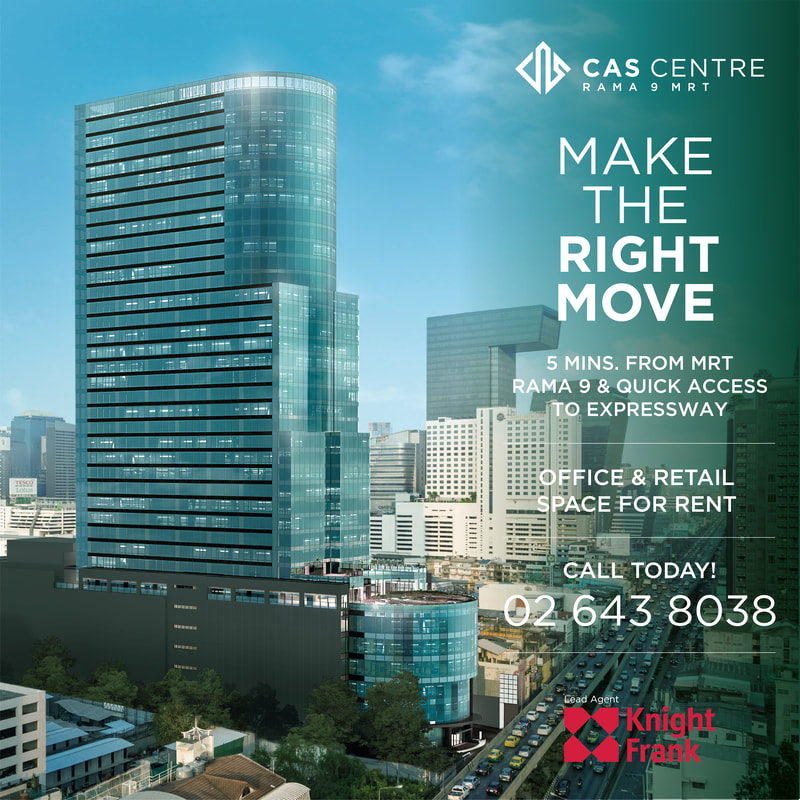Since the signing of the Bowring Treaty with England in 1855, Siam began to officially open the country to trade with foreigners, especially Europeans.
The major products traded were wood, animal skins, rice, spices and forest products from Siam, while products imported into the country included technological advanced machinery, various consumables and furniture. During the 18 years of King Rama IV's reign, foreigners, both Westerners and Chinese, established trade and made contact with hundreds of civil servants.
Therefore an exchange of culture occurred with the Siamese people, particularly among the upper classes such as the titled aristocracy. Various trade businesses were founded by foreigners from Europe, and shops had been set up to sell goods to the Siamese. By the time of the reign of King Rama V, King Chulalongkorn, trade had become more prosperous. As the government of Siam now required the fruits of modern science and new technology from Europe, it became necessary to employ foreigners to serve in the country, and expert engineers, architects, officers in five different foreign affairs departments, and in military accounting systems were all especially welcomed.
This resulted in quite active European groups in Siamese society. They generally could be found grouped together at the end of Charoenkrung Road and stretching into Silom and Sathorn where they maintained a strong presence along these roadsides.
Within these groups, and to facilitate meetings with the Europeans, a new culture was created which is now widespread in Thai society. The traditions of relaxing on the beach, outdoor sports such as tennis or badminton, socializing, drinking, and eating during the evenings were taken on by the men. Most importantly, the afternoon tea culture of the western women was also adopted.
The first evidence of this appears in the long cookbook of dainties and desserts included in the lessons of Wang Lang Lady (girls’ school), now known as Wattana Wittaya Academy, which was published for the first time in the year of the Bangkok Era 119, or 1899.
The major products traded were wood, animal skins, rice, spices and forest products from Siam, while products imported into the country included technological advanced machinery, various consumables and furniture. During the 18 years of King Rama IV's reign, foreigners, both Westerners and Chinese, established trade and made contact with hundreds of civil servants.
Therefore an exchange of culture occurred with the Siamese people, particularly among the upper classes such as the titled aristocracy. Various trade businesses were founded by foreigners from Europe, and shops had been set up to sell goods to the Siamese. By the time of the reign of King Rama V, King Chulalongkorn, trade had become more prosperous. As the government of Siam now required the fruits of modern science and new technology from Europe, it became necessary to employ foreigners to serve in the country, and expert engineers, architects, officers in five different foreign affairs departments, and in military accounting systems were all especially welcomed.
This resulted in quite active European groups in Siamese society. They generally could be found grouped together at the end of Charoenkrung Road and stretching into Silom and Sathorn where they maintained a strong presence along these roadsides.
Within these groups, and to facilitate meetings with the Europeans, a new culture was created which is now widespread in Thai society. The traditions of relaxing on the beach, outdoor sports such as tennis or badminton, socializing, drinking, and eating during the evenings were taken on by the men. Most importantly, the afternoon tea culture of the western women was also adopted.
The first evidence of this appears in the long cookbook of dainties and desserts included in the lessons of Wang Lang Lady (girls’ school), now known as Wattana Wittaya Academy, which was published for the first time in the year of the Bangkok Era 119, or 1899.
The Launch of Legacy of Sukhumvit at Sukhumvit Gallery & Sukhumvit Gallery Afternoon Tea
| Grande Asset Hotels and Property Public Company Limited and Hyatt Regency Bangkok Sukhumvit had the honour of welcoming Mr. Bhichai Rattakul to mark the launch of the "Sukhumvit Gallery & Sukhumvit Gallery Afternoon Tea". The Sukhumvit Gallery presents an exhibition of rare photographs related to the fascinating history of Sukhumvit Road, the most important thoroughfare in the city of Bangkok, and featuring images, information, document related to the person who supervised the construction of Sukhumvit road, old maps of the area, the origins of the names of various sois along the road, the residence of important persons and national artists, important places, mansions and modern houses all from the pre-mass transit era. All 45 images are displayed for permanent viewing without entry cost on the 4th floor of Hyatt Regency Bangkok Sukhumvit. A QR Code is also provided to download the e-brochure for the Sukhumvit Gallery. In addition, the Sukhumvit Gallery will also serve a sumptuous Afternoon Tea. Its unique presentation has been designed by an internationally renowned Thai floral artist, Mr. Sakul Inthakul, who was inspired by one of the images in Sukhumvit Gallery, which portrays the modern-style Ekamai Pedestrian Bridge. It was a state-of-the-art structure at the time of its construction, which many may recall. The bridge is located at the junction of Soi Ekamai (Sukhumvit Soi 63), and will likely be recognisable as the Afternoon Tea tray is served to the table. Made to order, every tray is a handcrafted sculpture of stainless steel, copper plating and artificial marble, artfully decorated with carefully selected flowers to express every aspect of their beauty. |
For this Signature Set of the hotel, Khun Sakul designed a contemporary Thai decoration, festooned with crown and globe amaranth flowers stringed with wire and arranged in subtle waves. A simple symbolism is expressed in its arrangement: 1) the purple and white are the brand colors of Hyatt Regency, 2) the contemporary Thai style reflects the concept of the hotel design, 3) the waves of flowers convey the activity and happenings of Sukhumvit Road, and 4) a single standing flower represents the hotel amidst its diverse environment. Those fortunate enough to enjoy Afternoon Tea at the Sukhumvit Gallery will discover 15 delectable treats, both sweet and savoury, including irresistible homemade desserts from the hotel’s talented chef team, amidst the classic atmosphere of the gallery evoking a sense of luxury, prosperity, modernity and vitality.
The coffee and tea served is of particular pride to Mr. Frederik Farina, the Executive Chef of Hyatt Regency Bangkok Sukhumvit, who decided to make a journey himself to touch, taste and select the best of all. The coffee is from the plantations at Letorgol Village, in Tak province, which has been planted by the Pakhayo hill tribes and prepared through a simple and organic dry process and medium roasted. Letorgol coffee has won the competition for Best Coffee of Thailand for two years. The coffee plants and seeds were given to the Pakhayo by His Majesty the late King Bhumibol, as well as other plants, and later, in the midst of the wooded hills they have created a beautiful forest-garden, rich in its variety of plants, flowers and winter vegetables, which all seem to combine with the coffee here creating a smell and taste completely different from other coffees.
For the best tea, Chef Frederik chose to visit another destination in Chiang Mai. The village of Mae Sae, in Mae Taeng District, was where he was captivated by the legendary tea that is grown naturally for over a hundred years and which the villagers call Cha Miang or Cha Par (wild tea). It is of the Assam species, of which only the top three leaves are picked in the mornings. The tea plantation and processing here have a long history, stretching back to World War II, and Chef Frederik chose Assam White Tea for its pleasant aroma and mellow but rich flavour.
For the best tea, Chef Frederik chose to visit another destination in Chiang Mai. The village of Mae Sae, in Mae Taeng District, was where he was captivated by the legendary tea that is grown naturally for over a hundred years and which the villagers call Cha Miang or Cha Par (wild tea). It is of the Assam species, of which only the top three leaves are picked in the mornings. The tea plantation and processing here have a long history, stretching back to World War II, and Chef Frederik chose Assam White Tea for its pleasant aroma and mellow but rich flavour.
SIGNATURE SET
On Your Plate
Savory
Sharing Plate
Sweets
Cold Serve
Organic Tea and Coffee
Dara’s Assam Tea Selections, Chiang Mai- Assam White, Green, Oolong, Thai Red
Le Tor Gold Coffee, Tak October Crop (2018) -Espresso, Mocca, Cappuccino, Latte Macchiato
Savory
- Krathong Tong- Minced pork, shrimp, corn, shallot in rice crispy cup
- Chor Muang- Steam flower shaped dumpling, filled with crabmeat, crispy garlic
- Por Pia Ma Muang Sod- Edible flowers and young mango fresh spring roll
- Cherry Tomato Quiche
- Gluten Free Multigrain Bread, Avocado, Crabmeat Sandwich
- Kanom Krok- Thai coconut-rice pancakes with mango, spring onion
Sharing Plate
- Pansib-Fried mini coconut curry puff
- Seasonal Dried Fruits Longan, Ginger, Mango
- Homemade Cookies
Sweets
- Khao Niew Ma Muang- Mango sticky rice, coconut milk, yellow mung bean
- Croque-En-Bouche- Choux pastry puffs, mango custard filling
- Mango & Pistachio Tartlet
- Homemade Macaroon with Pomelo Custard Filling
- Mini Sweet Potato Scones- Clotted cream, mango and passion fruit jam
Cold Serve
- Mini Ice Cream Cones- Hazelnut flavour dipped chocolate
Organic Tea and Coffee
Dara’s Assam Tea Selections, Chiang Mai- Assam White, Green, Oolong, Thai Red
Le Tor Gold Coffee, Tak October Crop (2018) -Espresso, Mocca, Cappuccino, Latte Macchiato
| Sukhumvit Gallery is open daily during 11:00 am. – 10:30 pm. with free entrance, and the Sukhumvit Gallery Afternoon Tea is served daily between 02:00 pm. – 04:00 pm., at 950++ Baht / set for two persons. For more information or reservations, please call +66 (0)2 098 1234 or email bangkoksukhumvit.regency@hyatt.com |

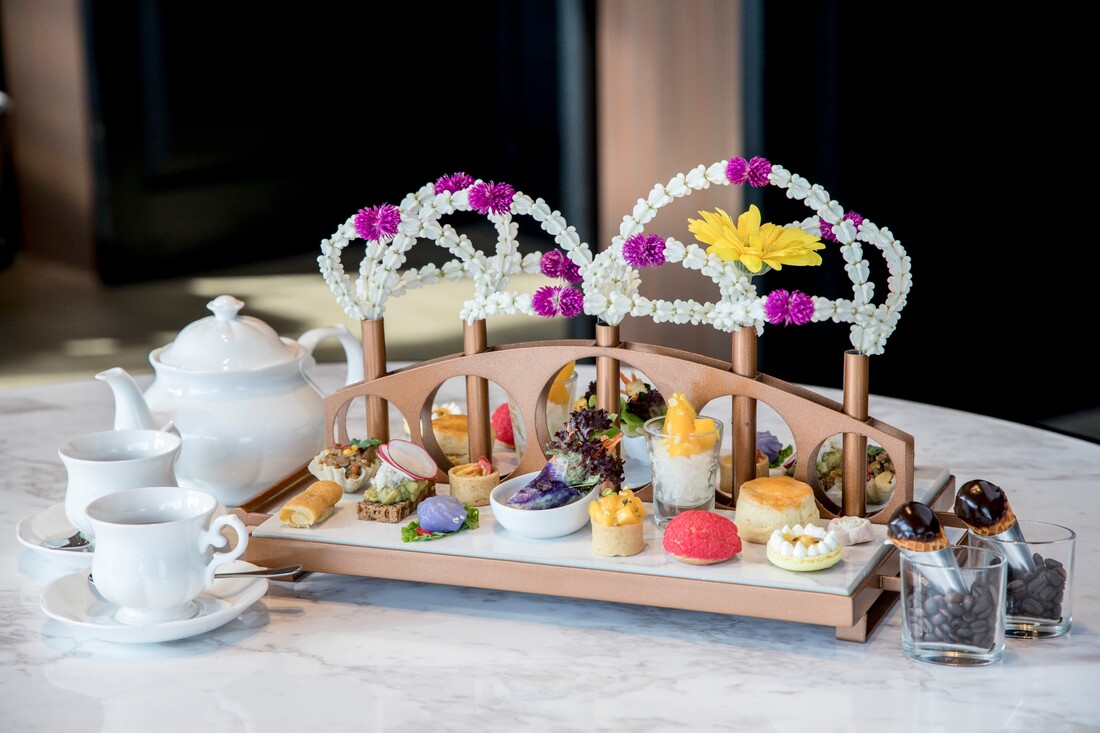
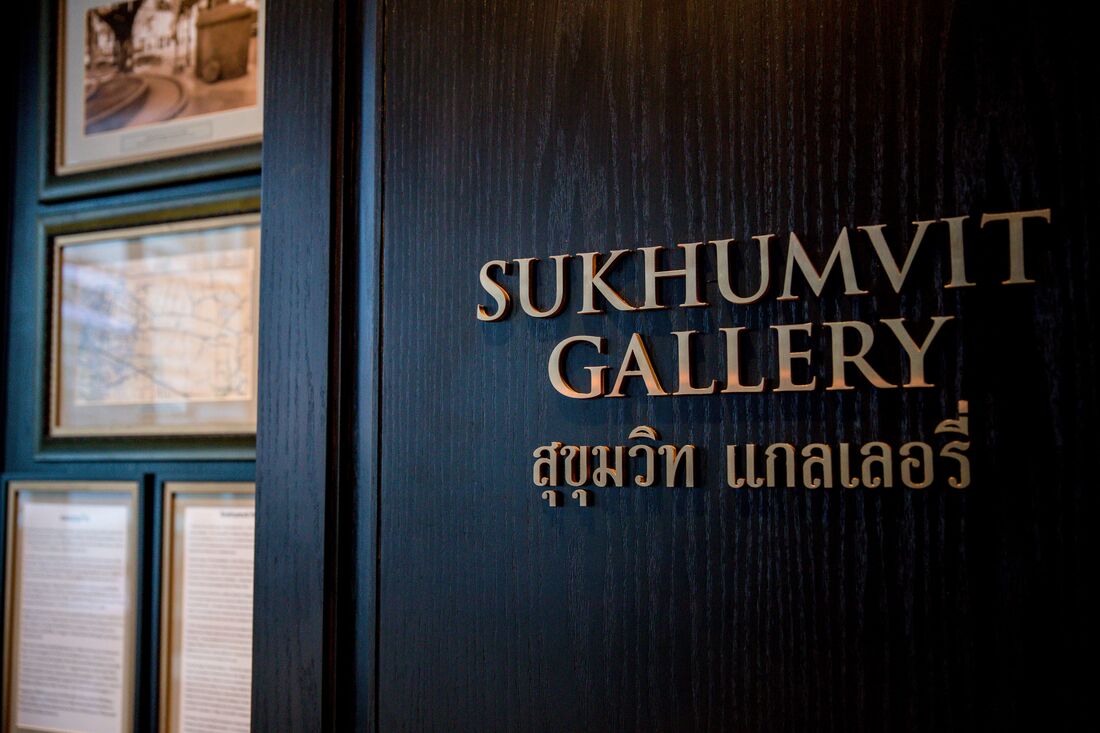
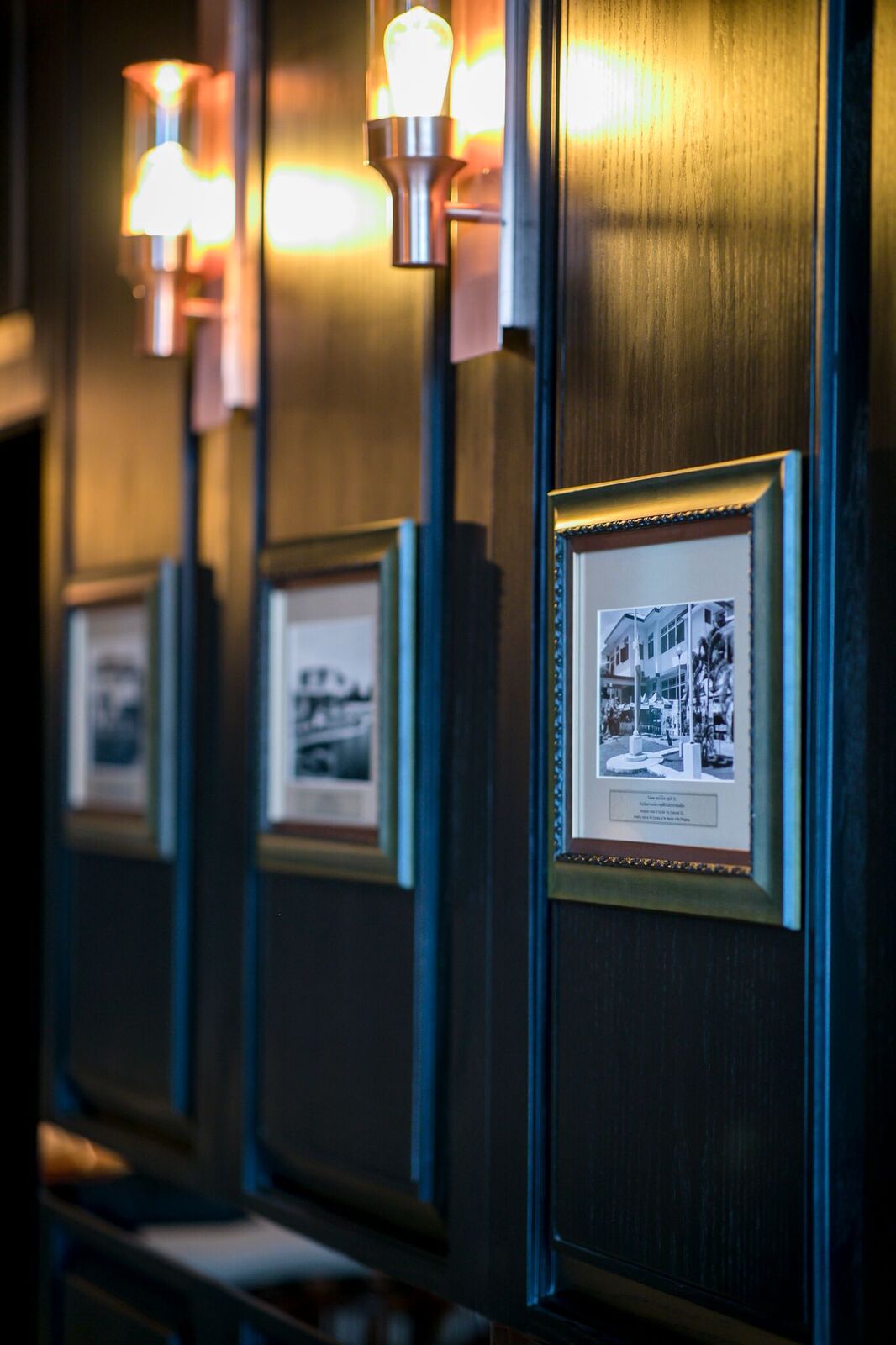
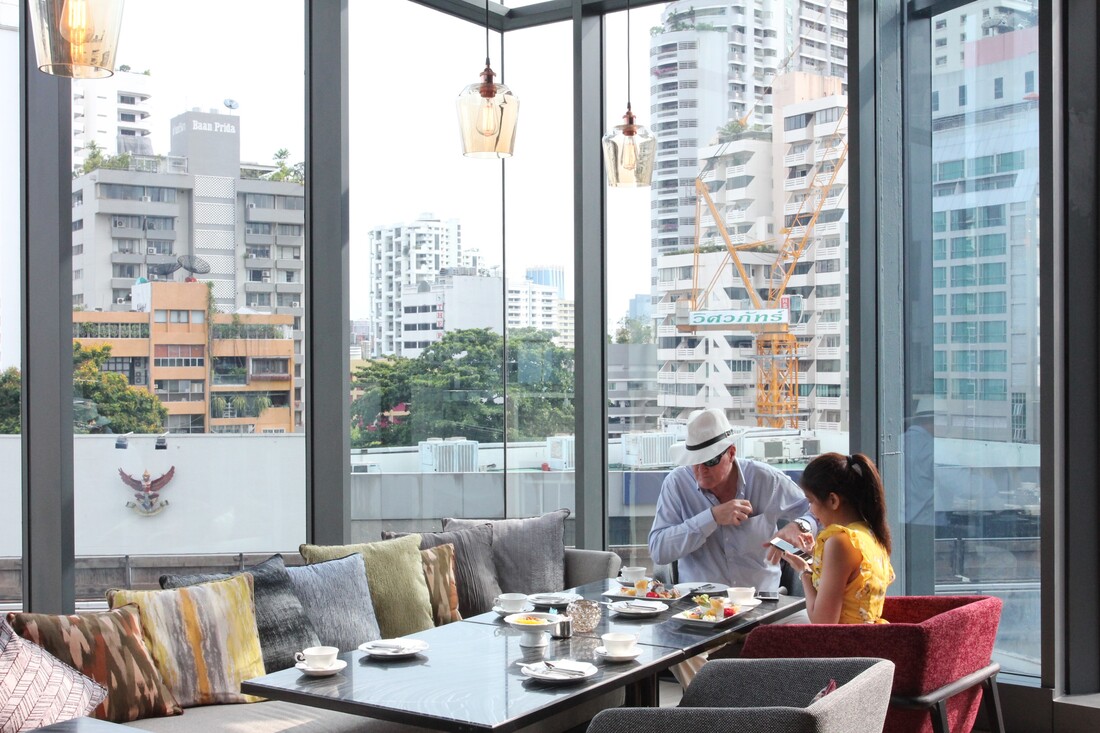
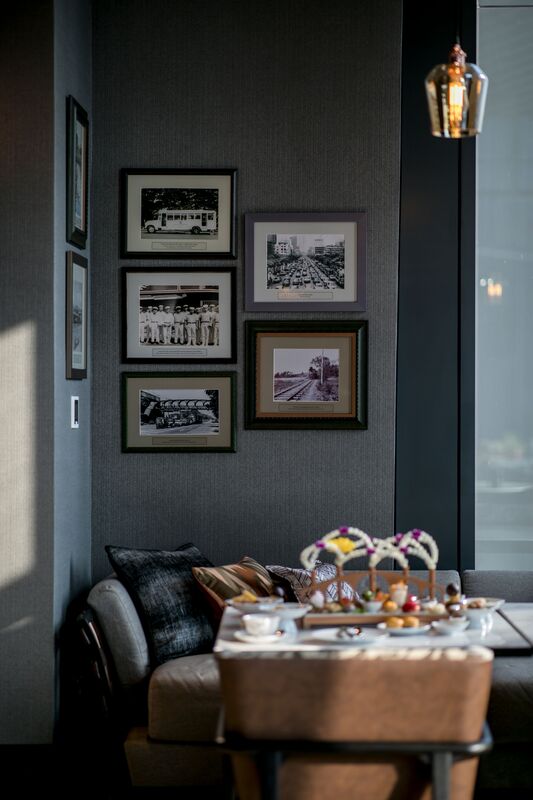
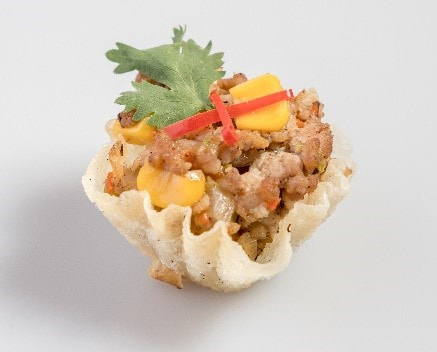
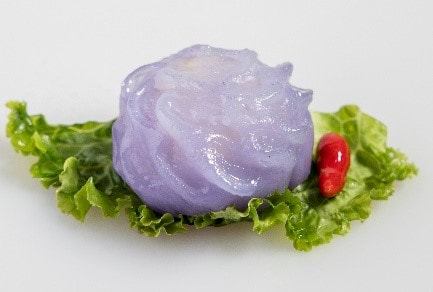
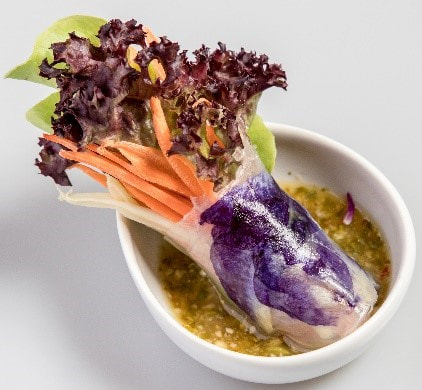
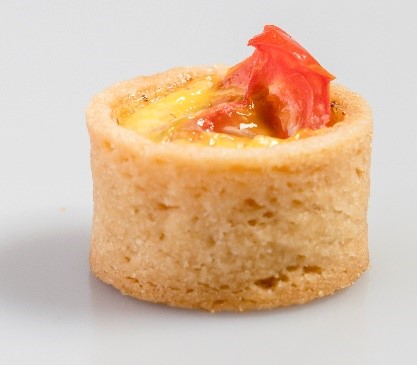
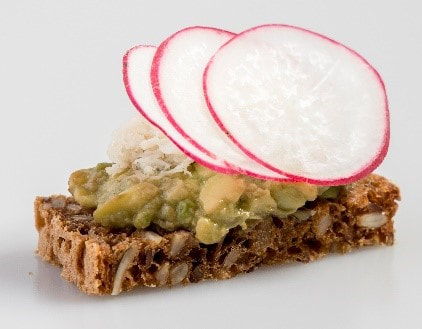
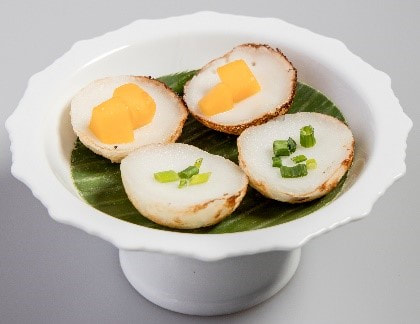
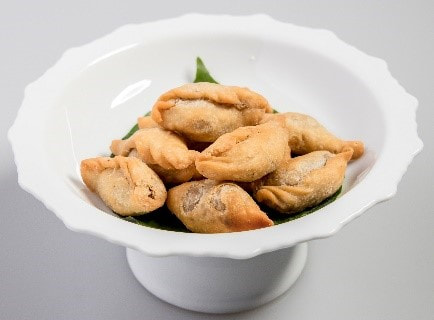
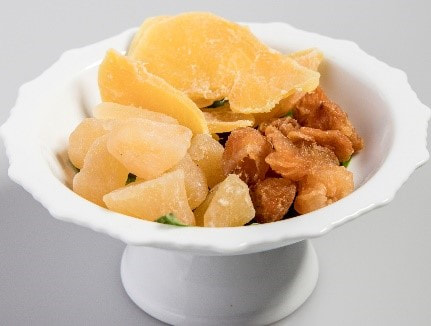
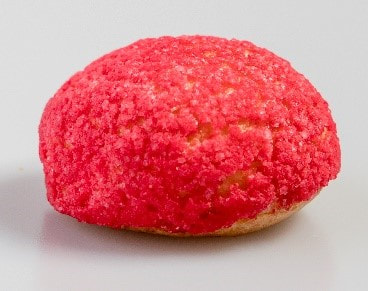
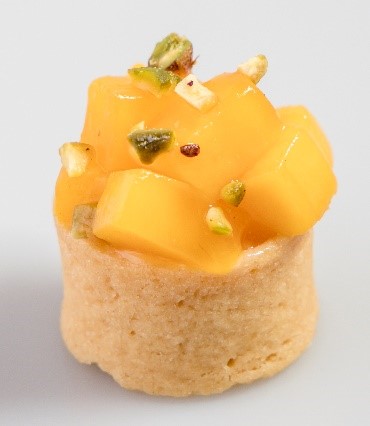
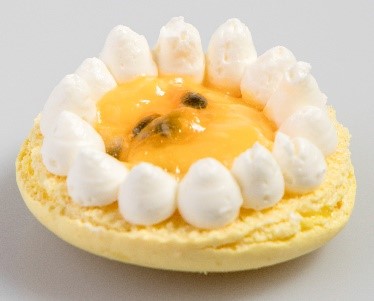
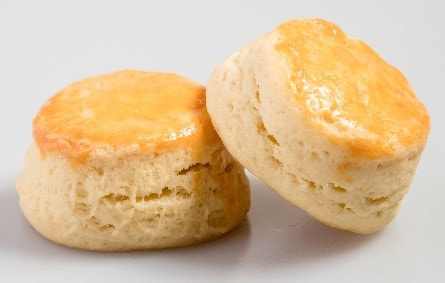
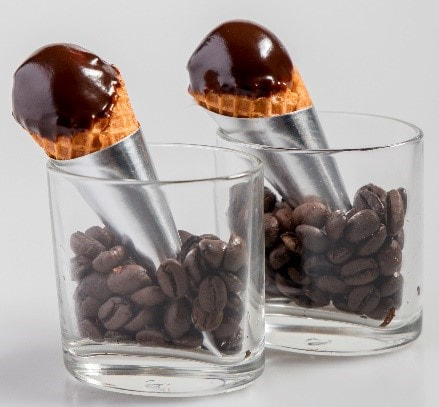
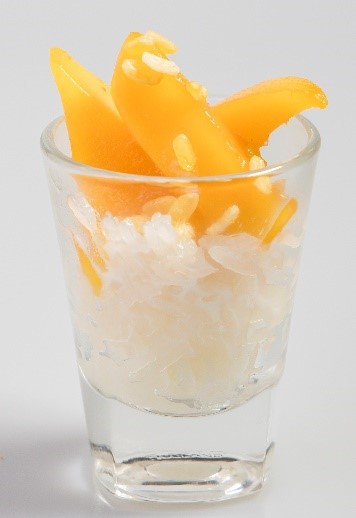

 RSS Feed
RSS Feed
